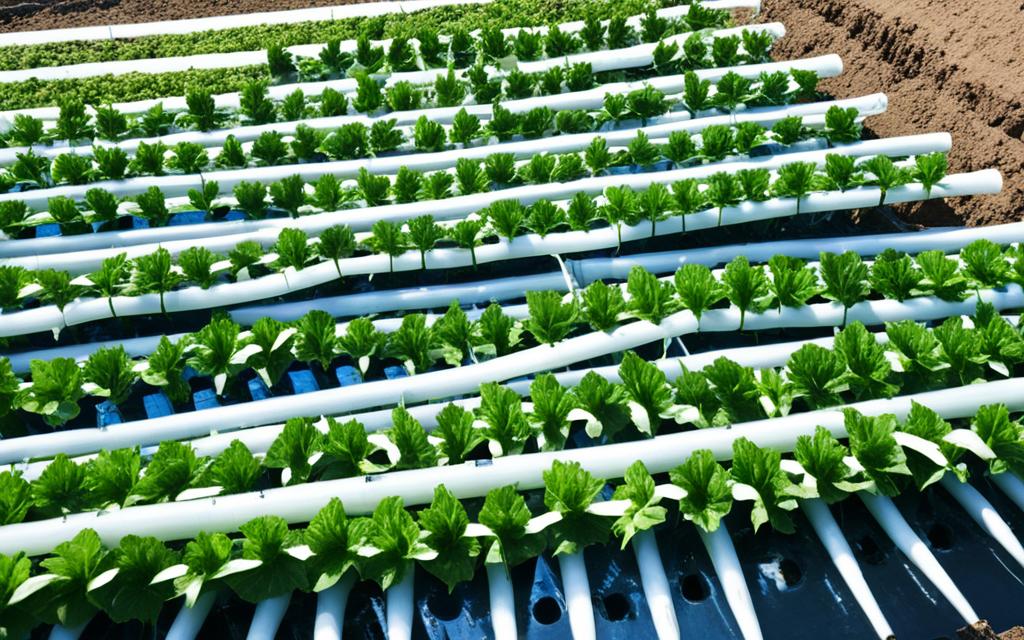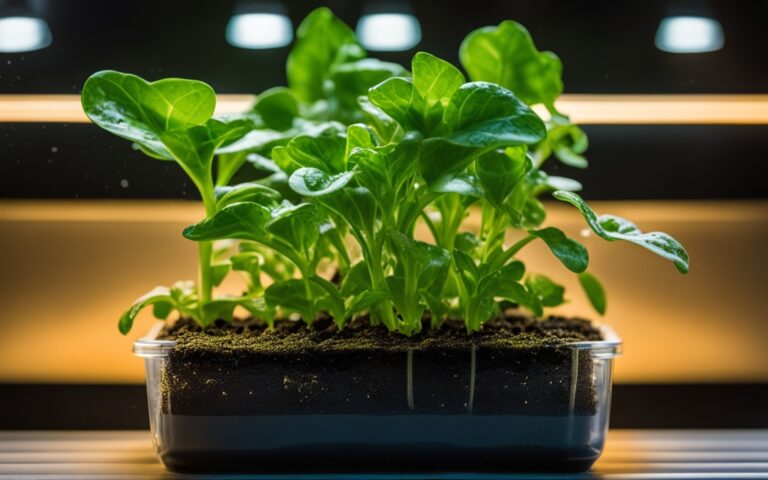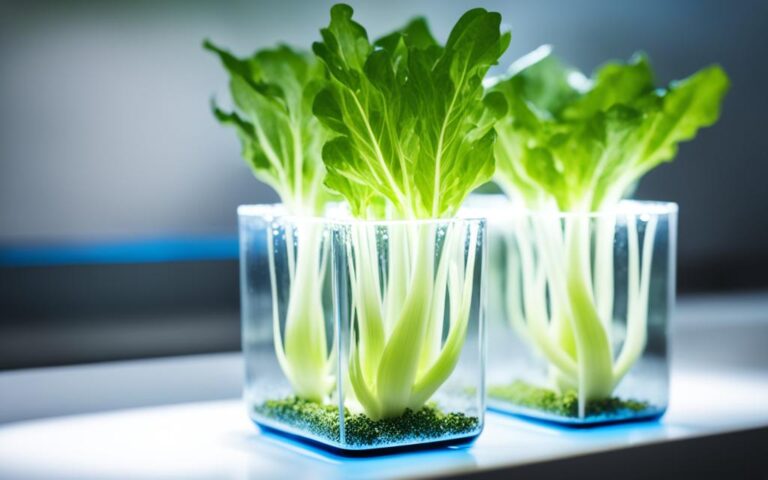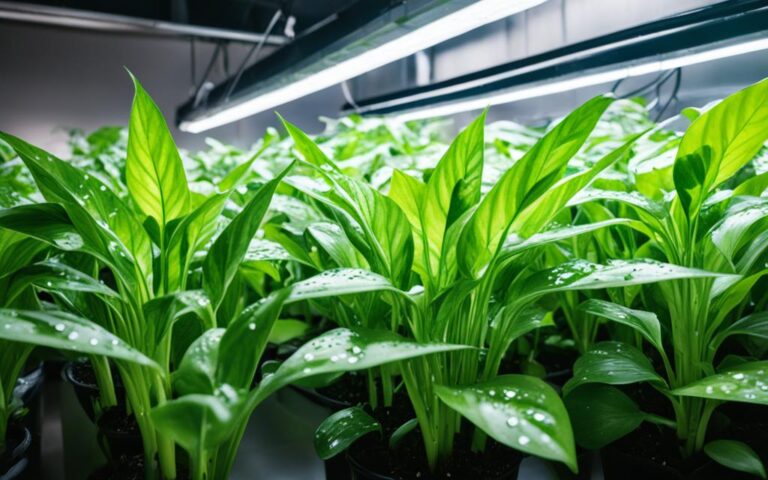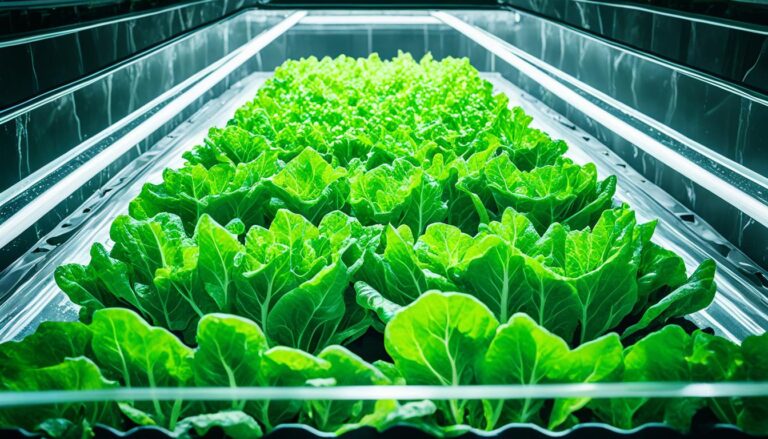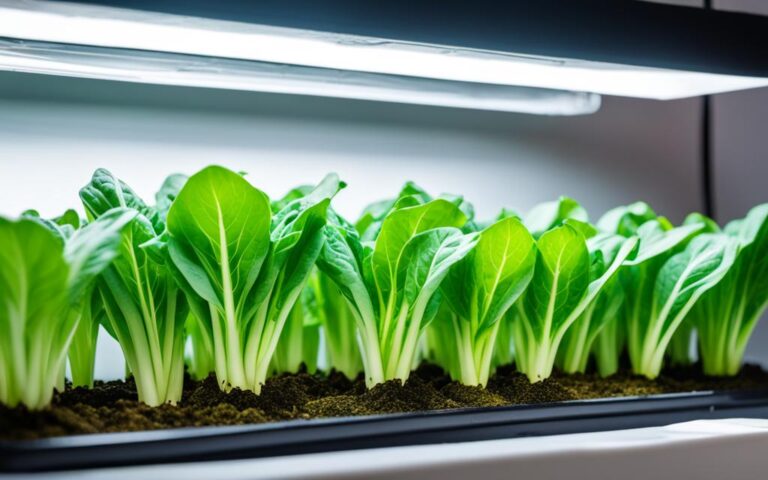Growing Hydroponic Okra Successfully | Tips & Tricks
Did you know hydroponic okra can give you up to 50% more than regular okra? This method not only boosts your harvest but lets you grow this healthy veggie in any climate or season. If you’re new or experienced in hydroponic gardening, this guide has all the expert advice you need to grow great hydroponic okra.
Key Takeaways
- Discover the best hydroponic okra varieties for optimal growth and yields
- Learn how to set up the most suitable hydroponic system for growing okra
- Understand the essential nutrients and their roles in hydroponic okra cultivation
- Maintain the perfect pH and EC levels for healthy hydroponic okra plants
- Ensure your okra plants receive the right amount of light, temperature, and oxygen
Introduction to Hydroponic Okra
Okra, also known as “lady’s fingers,” is a warm-season crop that does well in hydroponic systems. Growing hydroponic okra has many benefits over traditional soil methods. It’s becoming more popular for home and commercial growers.
Hydroponic okra grows faster and produces more than traditional methods. Hydroponics control the nutrient-rich environment. This helps okra plants mature quicker and give more harvests. It’s great for those wanting a steady supply of this healthy vegetable.
Okra hydroponics also means better control over growing conditions. You can manage temperature, pH, and nutrients for the best growth. This is super useful in areas with tough climates or soil.
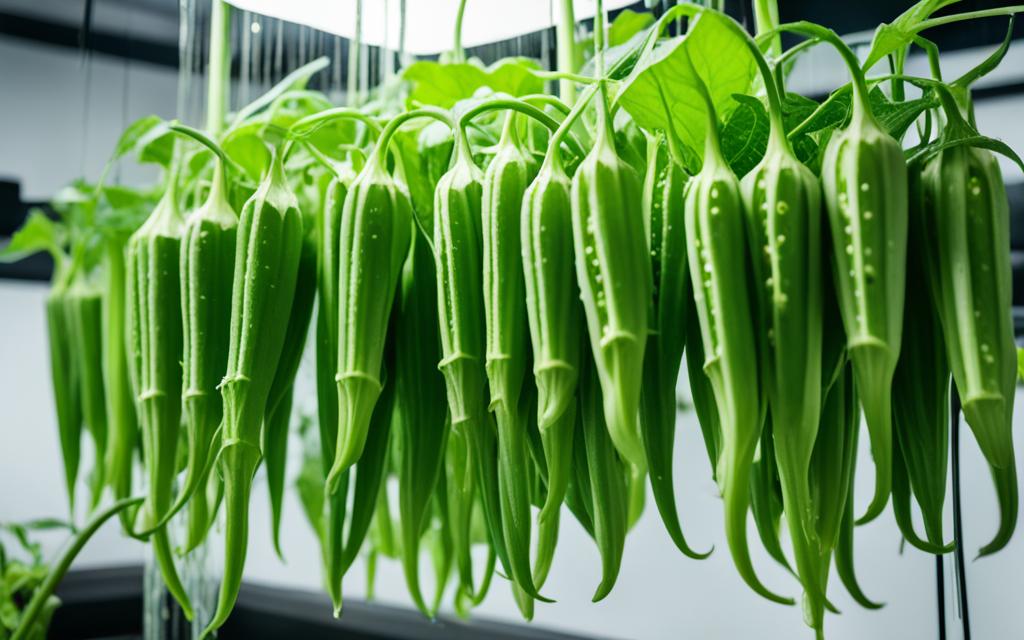
Plus, growing okra in hydroponics is better for the planet. It uses less land and water, making it a more efficient way to produce okra. This fits with the trend towards eco-friendly farming.
If you’re into gardening or growing food commercially, hydroponic okra is worth checking out. It offers unique benefits and best practices. By using this method, you can get the most out of okra and enjoy a great harvest.
Selecting the Best Hydroponic Okra Varieties
Choosing the right okra variety is key to success in hydroponics. Some okra types do better than others in hydroponic systems. Look for varieties that grow well, produce lots of pods, and resist diseases.
Recommended Varieties for Hydroponics
Top okra varieties for hydroponics include:
- Clemson Spineless: Known for high yields, compact growth, and adapting well to hydroponics.
- Annie Oakley: This hybrid grows fast and gives lots of tender, tasty pods.
- Red Burgundy: Its burgundy pods look great and fight off diseases well.
Qualities to Look for in Hydroponic Okra
When picking okra for hydroponics, look for these traits:
- Strong stems that hold up the pods
- Deep green, healthy leaves
- Fast growth for quicker harvests
- Resistance to pests and diseases
- Compact growth for hydroponic spaces
Stay away from okra that spreads out or falls over. They don’t do well in hydroponic spaces.
Setting Up Your Hydroponic System
Choosing the right hydroponic system is key when growing hydroponic okra. There are several systems that work well for this vegetable, each with its own benefits. Let’s look at the best options and what you need for a successful hydroponic okra setup.
Types of Hydroponic Systems Suitable for Okra
Here are the top hydroponic systems for okra:
- Deep Water Culture (DWC): This system keeps the plant’s roots in nutrient-rich water. It provides a steady supply of nutrients and oxygen.
- Nutrient Film Technique (NFT): Plants get a constant flow of nutrient solution over their roots in this method. It ensures a steady supply of essential nutrients.
- Ebb and Flow (Flood and Drain): This system floods the grow tray with nutrient solution at intervals. The roots soak up the nutrients before it drains.
Essential Components and Setup
Every hydroponic system needs certain core components for successful hydroponic okra growth. These include:
- Grow tub or container: A strong, food-safe container for the growing medium and plants.
- Growing medium: Materials like coco coir, perlite, or blends that offer good aeration and water retention.
- Water reservoir: A container for the nutrient-rich water solution.
- Air pump and airstone: For oxygenating the root system.
- Nutrient delivery system: A pump, tubing, and emitters to move the nutrient solution.
Setting up and maintaining these components is crucial for a great environment for your hydroponic okra plants.
Nutrient Management for Hydroponic Okra
Growing hydroponic okra needs a careful plan for nutrients. Okra plants need certain nutrients to grow well and produce lots of pods. It’s important to know what nutrients they need and why.
Essential Nutrients and Their Roles
Okra needs three main nutrients: nitrogen (N), phosphorus (P), and potassium (K). Nitrogen helps with leaf growth. Phosphorus is good for roots and flowers. Potassium keeps the plant strong and fights diseases.
Okra also needs secondary nutrients like calcium, magnesium, and sulfur. And it needs micronutrients like iron, boron, and zinc. These nutrients are important for the plant’s health.
Preparing and Monitoring Nutrient Solutions
It’s key to make a balanced okra hydroponic fertilizer. You must mix the right amounts of nutrients for your okra plants’ growth stage. This ensures they get what they need.
Check the pH and EC levels of the nutrient solution often. This keeps the okra growing well. Adjust the solution as needed to help your plants grow strong.
“Proper nutrient management is the foundation of successful hydroponic okra cultivation. By tailoring the nutrient solution to meet the plant’s specific needs, you can unlock the full potential of this versatile crop.”
pH and EC Levels for Hydroponic Okra
Keeping the right pH and electrical conductivity (EC) levels is key for your hydroponic okra’s health and growth. The ideal pH for hydroponic okra is between 6.0 and 6.8. This range helps the plants absorb nutrients well. The EC level should be between 1.8 to 2.4 mS/cm, depending on the plant’s stage and the environment.
It’s important to check and adjust the pH and EC levels often. This ensures your okra plants get the right mix of hydroponic okra nutrients. This prevents nutrient shortages or too much of something that can slow down growth and reduce yield.
Monitoring and Adjusting pH Levels
To keep the pH right for your hydroponic okra, test the nutrient solution’s pH often. Use a good pH meter or kit to check the pH. Then, add pH up or pH down products as needed to adjust the solution.
Maintaining Optimal EC Levels
The EC of your hydroponic nutrient solution shows the hydroponic okra electrical conductivity and the nutrient concentration. Use an EC meter to check the levels. Adjust the nutrient mix to keep the okra hydroponic nutrient balance in the right range.
“Precise control of pH and EC levels is essential for the success of your hydroponic okra crop. These parameters directly impact nutrient availability and overall plant health.”
By managing the pH and EC levels in your hydroponic system well, you’ll grow healthy, productive hydroponic okra plants.
Light and Temperature Requirements
Getting the right balance of light and temperature is key for growing hydroponic okra well. Okra loves full sun, needing at least 6-8 hours of direct hydroponic okra lighting daily. Use the right ideal grow light for hydroponic okra to keep the light strong and lasting.
The okra hydroponic temperature for healthy growth and pods is between 75°F and 90°F. Keeping your greenhouse or indoor space at these temperatures is crucial for your hydroponic okra to grow fully.
Optimal Light Intensity and Duration
Okra loves the sun and needs lots of light. Try to give your hydroponic okra plants at least 6 hours of direct sunlight each day. If sunlight is scarce, add high-quality grow lights made for hydroponic okra lighting. These lights should have an intensity of about 400-600 μmol/m²/s for best growth and pod production.
Temperature Range for Healthy Growth
The best okra hydroponic temperature for growing okra is between 75°F and 90°F. Make sure your greenhouse or indoor area stays at these temperatures from seedling to when it produces fruit. Temperatures outside this range can cause slow growth, late flowering, and poor pod quality.
By giving your hydroponic okra the right hydroponic okra lighting and keeping the ideal okra hydroponic temperature, you can create the best environment. This leads to strong growth and lots of harvests.
Water and Oxygen Requirements
Cultivating hydroponic okra needs careful attention to its water and oxygen needs. Okra likes a steady supply of moisture. Aim for about an inch of water per week for the best results. Make sure your hydroponic system keeps the roots moist, never letting them dry out.
Okra also needs enough oxygen in the roots to grow well. Use an air pump and air stones in your setup to keep the roots aerated. This helps prevent root rot and other problems. It makes sure your okra plants grow strong and healthy.
| Hydroponic Okra Water Needs | Hydroponic Okra Oxygen Requirements |
|---|---|
| Approximately 1 inch of water per week | Aeration provided by air pump and air stones |
| Consistent moisture supply to avoid drying out | Prevents root rot and other oxygen-related problems |
Keep an eye on the hydroponic okra water needs and okra hydroponics oxygen requirements. This will help you create the best environment for your hydroponic okra. You’ll get a great harvest.
“Proper water and oxygen management is the foundation for successful hydroponic okra cultivation.”
Hydroponic Okra Growth Stages
Growing okra hydroponically means knowing the different growth stages. This knowledge helps you give the best conditions for healthy growth and more yield.
Seedling and Vegetative Stage
The seedling and vegetative stage is the start of the okra growth cycle. Make sure the light, temperature, and nutrients are right to help the plant grow strong leaves and roots. Okra hydroponics seedling care is key for the plant’s success.
Flowering and Fruiting Stage
When the plant starts flowering and fruiting, watch for blooms and make sure it has the right nutrients and conditions. This stage is when the plant makes the valuable okra pods you harvest.
Knowing the hydroponic okra growth stages lets growers adjust their systems and care for the best results. This leads to a successful and plentiful hydroponic okra harvest.
Common Pests and Diseases
Keeping a hydroponic okra crop healthy means watching out for pests and diseases. Hydroponic okra faces many challenges, but you can beat them with early action. This way, you can protect your plants and get a great harvest.
Identifying and Preventing Pests
Growers of hydroponic okra often worry about aphids, grasshoppers, and stinkbugs. It’s important to check your plants often and catch problems early. Use things like insecticidal soaps or helpful insects to keep pests away.
Diagnosing and Treating Diseases
Hydroponic okra can also get sick with fungal infections and bacterial blights. Watch your plants for signs like color changes, wilting, or spots. If you see these, fix the problem fast. You might need to change the nutrient solution or cut off sick leaves.
By being careful and acting early, you can keep your hydroponic okra healthy and productive.
Harvesting and Storage Tips
Learning how to harvest hydroponic okra is key to getting the best taste and freshness. Wait until the pods are 3-4 inches long, checking every 2-3 days. Cut the pods with sharp, clean tools, leaving a bit of stem.
After picking your hydroponic okra, it’s important to store it right. Start by blanching the okra in boiling water, then cool it in ice water quickly. This keeps the color bright and the pods crunchy.
For keeping okra fresh for a few weeks, put it in containers or bags and keep it in the fridge. If you want to keep it longer, freeze it for months of enjoyment.
| Harvesting Hydroponic Okra | Storing Hydroponic Okra |
|---|---|
|
|
By following these easy harvesting and storage tips, you can keep your hydroponic okra fresh and ready for many tasty dishes.
Maximizing Yield and Productivity
To get the best from your hydroponic okra, use proven methods to boost yield and productivity. The right pruning and training, along with the best environmental conditions, can help your plants reach their full potential.
Pruning and Training Techniques
Pruning is key to getting more from your hydroponic okra. Remove lower leaves and side shoots regularly. This directs the plant’s energy to making more pods. It ensures the plant uses its resources well, leading to more pods.
Optimizing Environmental Conditions
For healthy growth and high productivity, keep the environment just right for your hydroponic okra. Watch and adjust the temperature, humidity, and air flow. This creates the best conditions for your plants to grow strong and produce more okra.
| Environmental Factor | Optimal Range for Hydroponic Okra |
|---|---|
| Temperature | 75-85°F (24-29°C) |
| Humidity | 60-70% |
| Air Circulation | Gentle, consistent airflow |
By using smart pruning and training, and optimizing environmental factors, you can make the most of your hydroponic okra. This approach leads to a harvest that goes beyond your expectations.
Conclusion
This guide has given you the key knowledge and strategies for growing hydroponic okra. We’ve covered everything from picking the best varieties to handling nutrients, pests, and diseases. Now, you’re ready to grow a thriving hydroponic okra crop and enjoy a bountiful harvest at home.
Whether you’re new to hydroponic gardening or have been doing it for a while, this hydroponic okra growing guide has what you need. It offers tools and insights for successful hydroponic okra cultivation. By making your hydroponic system better, checking nutrient levels, and solving problems, you can make sure your hydroponic okra growing success is guaranteed.
With what you’ve learned from this article, you’re set to start your hydroponic okra adventure. This crop is versatile and rewarding. Happy growing!
